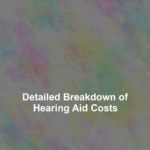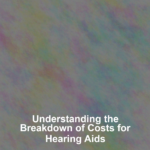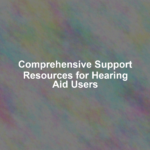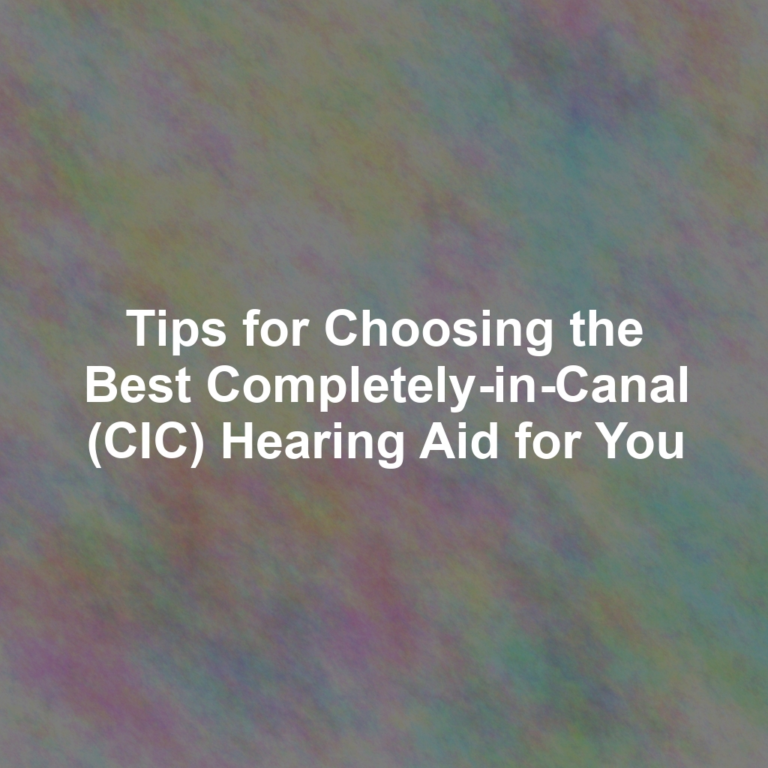When you consider the clarity, the connectivity, and the comfort that hearing aids promise, itG??s crucial to also contemplate the costs, the coverage, and the care they require.
Investing in a hearing aid isnG??t just a matter of finding the right fit for your ears; itG??s also about understanding the financial investment youG??re making. From the initial price tag to the ongoing maintenance expenses, the costs associated with hearing aids can be considerable, and youG??ll need to navigate the complex landscape of insurance, warranties, and potential financial assistance.
As youG??re poised to make an informed decision about your auditory health, youG??ll want to arm yourself with a detailed understanding of what to expect financially. LetG??s explore the factors that contribute to the total cost of hearing aids, including some that might not be immediately obvious, and uncover how you can manage these expenses without compromising on quality.
Understanding Hearing Aid Pricing
When youG??re exploring the cost of hearing aids, itG??s crucial to understand the factors that contribute to their pricing. The technology inside these tiny devices is advanced, and thatG??s a significant part of why theyG??re often pricey. High-end models that offer superior sound quality, advanced noise reduction, and wireless connectivity can cost more than basic analog devices.
DonG??t forget, youG??re not just paying for the device itself; services such as a hearing test, custom fitting, adjustments, and follow-up care may all be included in the price. Manufacturers invest heavily in research and development to improve hearing aid effectiveness, which also adds to the cost. Additionally, economies of scale play a part. Hearing aids arenG??t produced in the same high volumes as other electronics, which means the per-unit cost remains high.
ItG??s worth noting that prices can vary depending on where you live and the provider you choose. You might find that larger chains offer different pricing structures compared to local clinics. Always ensure youG??re getting a detailed breakdown of whatG??s included so you can make an informed decision. Remember, a higher price doesnG??t always guarantee better quality, so itG??s important to weigh cost against the benefits each hearing aid provides.
Types of Hearing Aids and Costs
Now that you understand the factors behind hearing aid pricing, letG??s explore the various types of hearing aids and their associated costs. YouG??ll find that prices can vary widely based on the style, technology, and features of the device. HereG??s a straightforward breakdown to help you get a sense of what you might be spending:
-
Behind-The-Ear (BTE)
-
Average Cost: $1,000 – $2,750
-
Features:
-
Larger, more visible but powerful
-
Suitable for most types of hearing loss
-
In-The-Ear (ITE)
-
Average Cost: $1,200 – $2,950
-
Features:
-
Less visible, fits in the outer ear
-
Good for mild to severe hearing loss
-
In-The-Canal (ITC) and Completely-In-Canal (CIC)
-
Average Cost: $1,300 – $3,000
-
Features:
-
Very discreet
-
Ideal for mild to moderately severe hearing loss
-
Invisible-In-The-Canal (IIC)
-
Average Cost: $1,500 – $3,000
-
Features:
-
Nearly invisible
-
Best for mild to moderately severe hearing loss
-
Receiver-In-Canal (RIC)
-
Average Cost: $1,000 – $2,800
-
Features:
-
Similar to BTE but smaller
-
Suitable for mild to moderate hearing loss
Additional Expenses to Consider
Beyond the initial purchase, youG??ll need to budget for ongoing maintenance and potential repair costs for your hearing aids. Just like any sophisticated device, theyG??ll require regular service to keep them functioning optimally. You might encounter expenses for professional cleanings, battery replacements, or updates to your hearing aidG??s software.
DonG??t overlook the cost of consumables. YouG??ll be buying batteries frequently unless youG??ve opted for a rechargeable model. Even then, youG??ll eventually need to replace the rechargeable batteries after a few years. Consider, too, the need for dehumidifiers to protect your investment from moisture, and earmolds or domes that may wear out and need replacing.
You should also plan for the possibility of out-of-warranty repairs. Accidents happen, and if your hearing aids are damaged, the repair costs can be significant. Moreover, if your hearing aids are no longer covered by the manufacturerG??s warranty or if youG??ve declined an extended warranty plan, youG??ll be responsible for all repair costs.
Lastly, factor in the expense of periodic hearing tests. Your hearing can change, necessitating adjustments to your hearing aids that might incur fees if theyG??re not covered by your service plan. All these additional costs are crucial to consider when budgeting for your hearing health.
Insurance and Financial Assistance
While assessing the ongoing and potential expenses for hearing aid maintenance, itG??s essential to explore the options for insurance coverage and financial assistance that can alleviate some of these costs. You might find that navigating the maze of insurance benefits and assistance programs can be as tricky as understanding the technical specs of your device. But donG??t worry, youG??re not alone in this.
HereG??s a breakdown of what you might encounter:
-
Private Insurance: Some plans may cover part or all of your hearing aid costs. Check your policy details.
-
Medicare: Generally doesnG??t cover hearing aids, but Medicare Advantage Plans might offer some benefits.
-
Medicaid: Coverage varies by state, but children are often covered.
-
Financial Assistance Programs
-
Nonprofit Organizations: Programs like the Hearing Loss Association of America can offer resources and support.
-
State and Federal Programs: Vocational rehabilitation programs may provide assistance if hearing aids are essential for your job.
Saving Money on Hearing Aids
You can reduce the financial burden of acquiring hearing aids by considering various cost-saving strategies. First, explore over-the-counter (OTC) hearing aids. With recent regulatory changes, youG??ve got the option to purchase less expensive OTC devices directly from stores, without the need for a prescription or fitting by an audiologist.
Look into hearing aid discount programs offered by organizations for the hard of hearing or by hearing aid manufacturers themselves. Some may provide financial assistance or discounts on the devices. DonG??t hesitate to ask your audiologist about any such programsG??theyG??re there to help you navigate these options.
Another way to save is by comparing prices and features of different models. You donG??t always need the latest technology; sometimes, older models can meet your needs at a fraction of the cost. Be sure to only pay for the features youG??ll actually use.
Lastly, consider refurbished or used hearing aids, which can be significantly cheaper than new ones. Just ensure theyG??re from a reputable source and come with a warranty or guarantee for peace of mind. By being resourceful and doing your homework, you can find quality hearing aids that wonG??t break the bank.
Conclusion
YouG??ve navigated the complex world of hearing aid costs, from various types to extra fees. Remember, insurance and aid might ease the burden.
To save, compare shops, consider models, and donG??t overspend on features you wonG??t use. Investing in your hearing is priceless, but it doesnG??t have to break the bank.
Make informed choices and seek deals; your walletG??and earsG??will thank you. Keep listening smartly and affordably!









